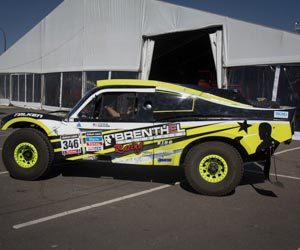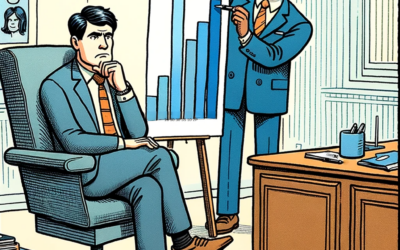A lot of SUVs and trucks are designed for off-road driving, but how much time is actually spent off the road? Not too much, in most cases. We’re accustomed to smooth surfaces, well-defined lanes, no hairpin turns, and clear traffic signs and signals. We can even drive on autopilot for some stretches. Pretty soon, we may not have to do any of the actual driving. While leaders benefit from many technological advances, too, their work doesn’t seem to get easier. If anything, it seems to get harder. They still have a lot of driving to do.
I had a chance to discuss the parallels between driving and leadership with Peter Hajas, who knows a lot about both. He is a Minnesota hedge fund manager and an off-road racer who won the 2013 Dakar Challenge by posting the fastest adjusted time combined from two major desert races—the Tecate SCORE Baja 500 and the Eldorado HDRA Reno 500. He’s skilled at analyzing terrain (both physical and financial) and making quick and effective decisions. Peter believes that leaders ought to be more mindful of the impact their quick decisions have on others in the “car” with them.
According to Peter, the driver must read every bump in the terrain and make moment-to-moment judgments about how to maneuver the vehicle without flipping it, bottoming out, or going off a cliff. The co-driver/navigator knows and can see the path, but has no clue what swift maneuvers the driver will make. Co-drivers get tossed and bumped around and often get sick to their stomach. Peter said he has only sat in the co-driver seat once and that was enough for him. Bear in mind that Peter is accustomed to driving with his helmet screwed into the car (to avoid whiplash). He’s not exactly faint of heart.
Like most leaders, off-road drivers try to map out a vision and strategic plan with their co-drivers in advance, but both understand that there will be millions of adjustments along the way. Leaders of organizations usually work hard to develop a clear vision, mission, and strategy, and to transmit these to their coworkers who are in charge of much of the day-to-day driving/execution. Organizational leaders don’t steer very often–at least not the way that off-road drivers do–but when organizational leaders do make a sharp turn, their passengers/coworkers feel it. To these leaders, they are just making the correct turns to win the race, but to those riding and supporting the effort they simply feel these twists and turns as stomach-wrenching experiences.
If you are the one driving the organization, limit the hairpin turns in strategy, vision, or mission. Your helmet may be screwed into the car, but your coworkers’ helmets aren’t. Don’t give them whiplash.
Even if you feel like you’re driving steadily and cautiously, know that every bump you negotiate may feel like a Grand-Canyon-sized crater to everyone else riding with you. Communicate! Let your coworkers know what to expect in the way of bumps–and with as much advance notice as possible.




